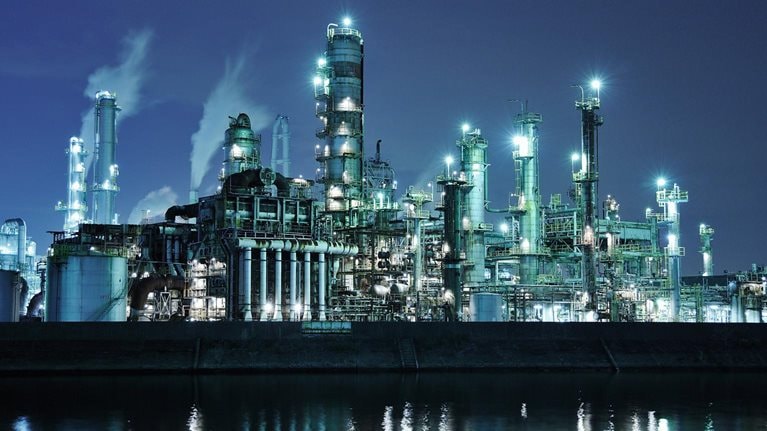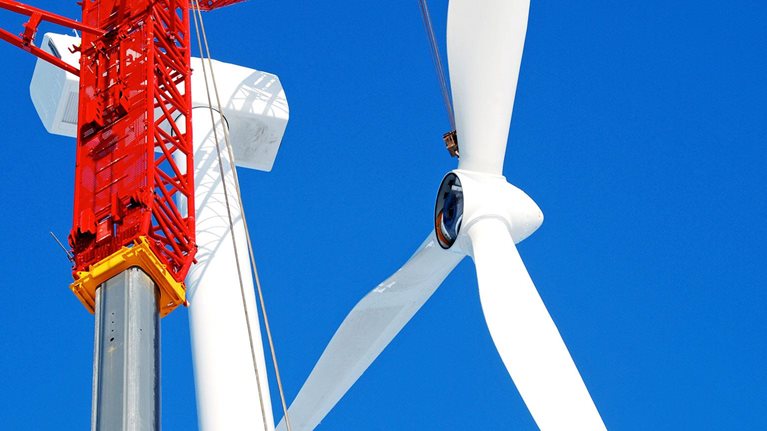Record high, volatile natural-gas and electricity prices are forcing many energy-intensive industrial companies in Europe to reconsider their energy strategies. This is especially true for companies in which energy had historically accounted for only a small percentage of total costs until prices began to increase in 2021. Now, aiming to remain competitive in the marketplace, these companies are seeking ways to better manage energy costs while maintaining security of supply.
There are other reasons why focusing on energy sourcing is increasingly important for European industrial companies. These companies’ sustainability strategies call for large reductions in carbon emissions, and some companies are going as far as to pursue varying degrees of carbon neutrality. As a result, there is more and more demand for low-carbon energy sources and a movement toward electrification across industrial companies. However, switching to just one source of energy could result in concentrated exposure, making a company vulnerable to supply shortages.
There are many approaches to optimize energy procurement, but success lies in addressing one of three imperatives: cost optimization, sustainability of supply, and security of supply. Approaches include, but are not limited to, captive on-site or off-site power generation from wind and solar; power purchase agreements (PPAs), in which an industrial company commits to buying a given amount of energy at a fixed price; and hedging in the futures markets.
In this article, we take a closer look at the pros and cons of these alternatives to traditional energy sourcing. The appropriate choice will vary by company, industry, and country or region. Regardless of this choice, it is incumbent on executives of industrial companies to manage their energy procurement strategies as they fight to remain competitive in a challenging market.
Four ways industrial companies can manage energy procurement
In 2022, electricity and natural-gas prices rose 500 percent and 690 percent, respectively, compared with average market prices from 2017 to 2020. These price increases and market volatility were spurred by concerns about natural-gas shortages resulting from the Russian invasion of Ukraine, maintenance issues with nuclear power plants in France, and an extremely dry start of the year. Europe’s spending on oil, gas, and coal in 2022 was 2.6 times higher compared with 2021 (Exhibit 1). In the first quarter of 2023, prices have fallen from their peaks but remain high relative to historical levels.

Energy costs rose sharply for many companies. In some cases, energy historically represented only single-digit percentages of total costs. Since 2021, however, companies have seen increases of three to five times depending on their energy mix and exposure.
The energy market turmoil raised concerns in Europe about the security of supply of commodities that were once considered readily available. Natural-gas and power shortages became a serious threat to business continuation, and governments began to consider energy curtailment plans, prioritizing certain segments of demand. The possibility of shortages has mostly subsided, but a recent report on system adequacy from the European Network of Transmission System Operators for Electricity (ENTSO-E) identified significant potential power shortages in many European countries in 2025 to 2030.1 The report partly attributes these shortages to the phase-out of thermal generation. Regardless of the reason, security of supply and higher prices could remain significant issues for industrial companies.
Many European industrial companies have already begun addressing short- and long-term energy challenges. Some are considering moving production sites to locations with less expensive energy costs, with abundant renewable resources, or without a price on CO2 emissions. Others have signed PPAs from energy producers, invested in energy efficiency measures, and pursued renewable-energy production and sourcing opportunities.
Below, we examine four ways industrial companies can address these challenges. They vary by the amount of capital spending required to carry them out, how long it might take to execute them, and the capabilities needed maximize their value.
Captive on-site or off-site power generation
On-site or off-site power generation, especially renewables, can be one of the most powerful ways to achieve reliable and relatively inexpensive electricity. In particular, the considerable drop in the price of solar panels ($4,808 per kilowatt in 2010 to $857 per kilowatt in 2021)2 has increased the competitiveness of solar photovoltaics versus fossil technologies (Exhibit 2). This decline in price has sparked interest among large industrial energy consumers.
But the approach of generating power on-site or off-site has potential drawbacks. For example, weather at a company’s location can be a limiting factor for solar and wind power generation, or a company may lack suitable rooftops or access to enough land to make an investment worthwhile. Moreover, off-site power generation requires significant capital spending. Such investment could exceed a company’s budget or could be used on projects with higher returns elsewhere. Last, there are questions regarding whether investing in these assets is core to a company’s mission or if doing so is something that a third-party provider could do.

Power purchase agreements
PPAs to supply renewable energy may be an alternative to own-generation in that they typically require no capital spending. PPAs can take many forms. A typical PPA could be a contract lasting ten years or more in which an industrial company pays a fixed price in exchange for a defined amount of electricity produced by a generator. The industrial company gets a stable price for a given volume of renewably generated electricity while the producer has a guarantee that the asset will create a certain profit margin. The fixed price will reduce exposure to the market and its volatility (Exhibit 3). The cost of electricity per megawatt hour (MWh) from PPAs tends to be more expensive than electricity generated from a company’s own asset, but no capital spending is required.

There are two main types of PPA: physical and virtual. Physical PPAs are based on delivery of produced electricity and any green certificates.3 They are generally signed in the market where both the offtaker and the producer are located. Virtual PPAs are financial instruments that don’t involve the physical delivery of energy. These PPAs can be signed with the offtaker and producer located in different markets—for example, a producer is typically located in a country with a more attractive levelized cost of energy. Generally, though, most offtakers and producers are located within the same economic zone to facilitate the transfer of any green certificates.
Moreover, compared with classic market-traded products, PPAs can cover much longer time periods, so how a company implements them should be consistent with a long-term energy strategy.
Hedging
Buying electricity at market prices can expose companies to unfavorable price changes, which can inflate spending on energy, and to volatility, which makes energy costs unpredictable. The market has slowly adjusted to the volatility introduced into the system by the increased availability of intermittent renewable energy, but recent events have driven volatility even higher (Exhibit 4).

Widely used financial tools such as hedging through futures or forward markets can allow companies to reduce portfolio volatility and ensure cost predictability. Many industrial companies already are active hedgers, but some have remained on the sidelines. In certain cases, companies concluded that hedging was unnecessary because energy did not historically make up a significant share of product costs; others simply did not have the appropriate in-house capabilities to hedge. In addition, some industrial companies refrained from hedging because their competitors did not do so, thus avoiding being outcompeted or operating at a loss if energy prices fell below hedged prices. Higher energy prices and greater volatility, however, are forcing some companies to rethink their position on hedging.
Switching fuels
Industrial companies could consider switching to less expensive energy inputs if their processes and equipment permit it. For specific turbines or smelters, this could be a quick and economical adjustment. But it could also lead to using fuels that produce more carbon emissions (for example, moving from gas to coal) and so run counter to sustainability targets.
However, there are alternatives with a lower carbon footprint, such as biogas or hydrogen. In general, these commodities are more expensive than natural gas because they are associated with nascent technologies. Producing these fuels is capital intensive. But they could spur offtake agreements that secure a fixed price for a long period. For the offtaker industrial company, this provides cost predictability and a potential competitive advantage when prices of other commodities rise or are volatile.
Getting started
Energy-intensive industrial companies would benefit from creating a strategic road map to optimize their energy procurement approach (see sidebar, “ Developing an energy procurement strategy”). To get under way, a company could consider developing a view on future energy prices and building a better understanding of energy management, including the permitting process for construction projects.
Moreover, an energy procurement optimization exercise should explore different scenarios. For each of the scenarios, industrial companies should consider several factors, such as the appetite for freeing up cash to fund potentially heavy capital spending on own-generation or the availability and prices for supply instruments in each local market.
Once a company has established a strategic road map, implementing it will often require new capabilities. These include energy management skills for physical PPAs, financial accounting skills for virtual PPAs, trading skills for hedging, and skills to manage an on-site generation asset. One question for leaders to ask themselves would be whether the company should develop these capabilities in house or outsource them to a specialized counterparty. The preferable option for a given company will depend on a variety of factors, including company size, the importance of energy in final cost of products, and company culture; for many, a combination of in-house and outsourced capabilities will make the most sense.
To keep up with a rapidly changing market and facilitate their sustainability goals, European energy-intensive industrial companies should consider creating or updating their energy procurement strategies. There are a variety of approaches that they can employ, singly or in combination, to optimize prices, achieve cost predictability, and secure supply. By implementing a thoughtful energy procurement strategy, industrial companies could increase profit margins, support their sustainability programs, and improve the chances of remaining competitive in the marketplace.

